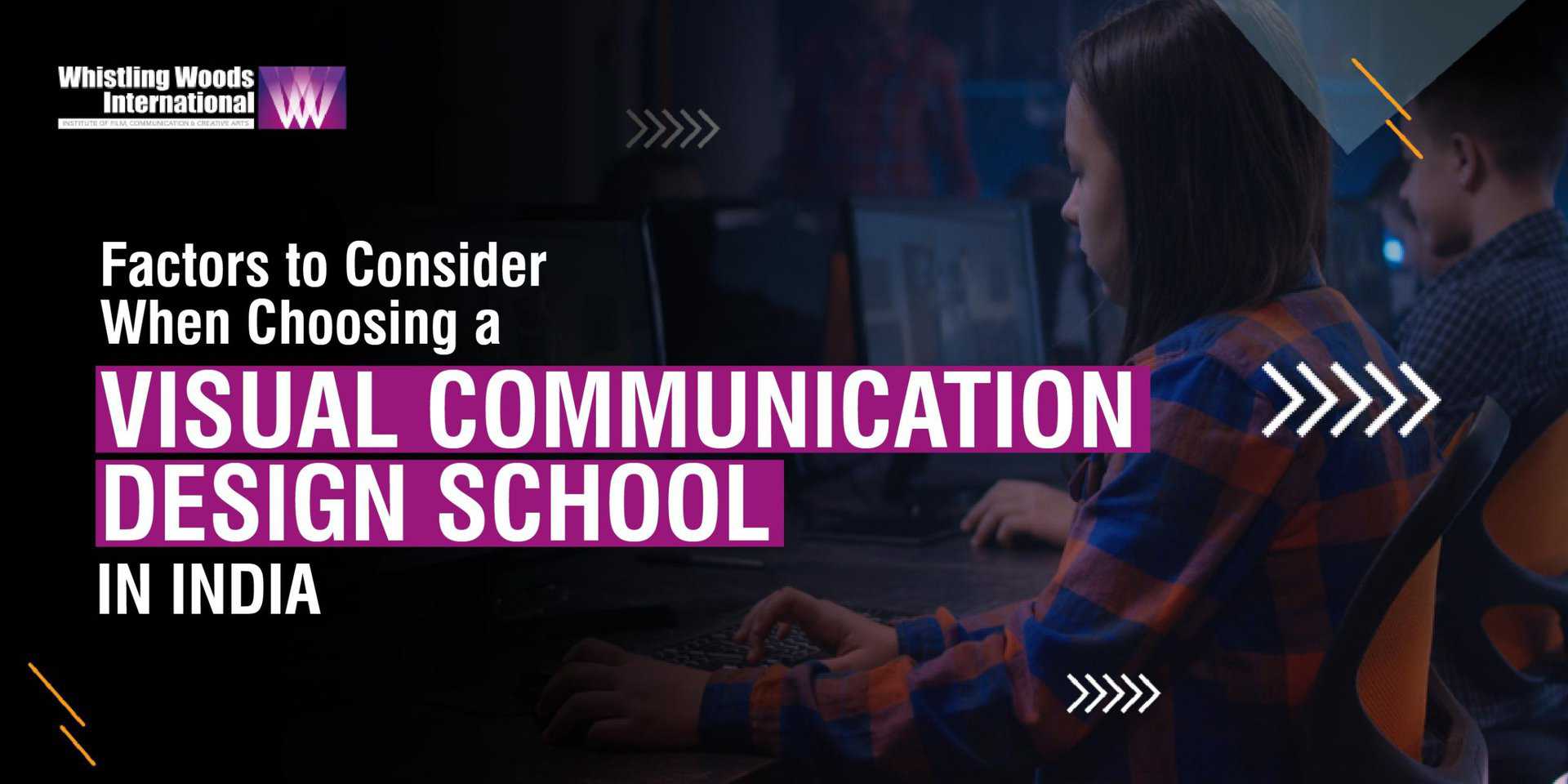Visual communication design is an exciting and ever-evolving field that plays a vital role in today’s society. It involves the creation of visuals, graphics, and other forms of media that convey information and messages to a specific audience. As a result, it’s essential to have the right skills and training to succeed in this industry.
One of the most crucial decisions you’ll make is choosing the right visual communication design school in India. However, with so many options available for visual communication design courses, it can be challenging to know where to begin.
In this blog – we help you with the crucial factors that you must take into consideration before enroling in any visual communication design courses in India.
Here You Go:
-
Course And Curriculum
The curriculum and course structure are critical factors to consider when choosing any visual communication design courses in India. A good curriculum should cover all the necessary details of design, including typography, colour theory, composition, and layout. However, it should also include advanced topics that prepare students for the challenges of the design industry, such as branding, advertising, user experience, and multimedia design.
A well-designed visual communication design curriculum should also be up-to-date with the latest industry trends and technologies. The design industry is constantly evolving, and a good school should keep up with these changes to ensure that students are prepared for the demands of the field. It includes teaching the latest software and tools used by designers and providing access to cutting-edge resources and technologies.
The course structure is also essential, as it should allow students to explore different areas of design and develop a broad range of skills. It includes hands-on projects that propel students to apply their knowledge to real-world scenarios and gain practical experience for their visual communication design careers. The course structure should also provide opportunities for collaboration and networking with other students, faculty members, and industry professionals.
-
Faculty’s Qualifications And Experience
The faculty’s qualifications and experience are crucial factors to consider when selecting any visual communication design courses in India. The faculty is responsible for imparting knowledge, skills, and expertise to students, so it’s essential that they are qualified and experienced in their field.
When evaluating faculty qualifications, consider their educational background, professional experience, and industry connections. A faculty with diverse backgrounds can offer students a range of perspectives and approaches to design. Additionally, a good faculty should also have experience in both academia and industry, giving students insight into the latest design practices and trends. Additionally, faculty members with connections to the visual communication design industry can provide students with valuable networking opportunities and potential job prospects.
It’s also important to consider the faculty’s teaching style and approach. Effective teachers should be able to engage students, create a positive learning environment, and provide individualised attention to each student’s needs. The faculty should also be supportive and accessible to students, offering guidance and mentorship throughout their studies.
-
School’s Infrastructure And Facilities
The visual communication design institute’s infrastructure and facilities are important considerations. A good school should have modern infrastructure and facilities that provide students with a conducive environment to learn and create.
Infrastructure includes the physical facilities of the school, such as classrooms, studios, libraries, and computer labs. Classrooms should be spacious, well-lit, and equipped with the latest teaching aids, such as projectors and audio-visual equipment. The studios should provide ample space and equipment for students to create design projects. The library should have an extensive collection of design books, journals, and other resources to support students’ research and learning. The computer labs should have up-to-date hardware and software to provide students with the latest tools and technologies used in the design industry.
Facilities also include non-physical resources, such as the institue’s Wi-Fi network, online learning management systems, and support services. The school should have a reliable Wi-Fi network that allows students to access online resources and communicate with each other and faculty members. The online learning management system should be easy to use and provide students with access to course materials, assignments, and grades. Additionally, the school should provide support services, such as career counselling, academic advising, and more, helping students enhance in their visual communication design careers.
Wrapping Up:
Ultimately, choosing the ideal visual communication design courses in India requires careful consideration of several factors. With the appropriate research and due diligence, you can find a school that will provide the education and resources you need to excel in this exciting field.
Whistling Woods International (WWI) is one of the best choices for visual communication design schools in India. We offer a comprehensive curriculum that covers the fundamentals of design, and advanced topics such as branding, advertising, user experience, and multimedia design. Our visual communication design course curriculum is up-to-date with the latest industry trends and technologies, ensuring that students are prepared for the demands of the design industry.
We have a global perspective, offering students exposure to international design practices and trends. We have collaborations with leading design schools and institutions around the world, providing students with opportunities to gain a global perspective on design.
You can read our visual communication design course’s brochure to know more.

